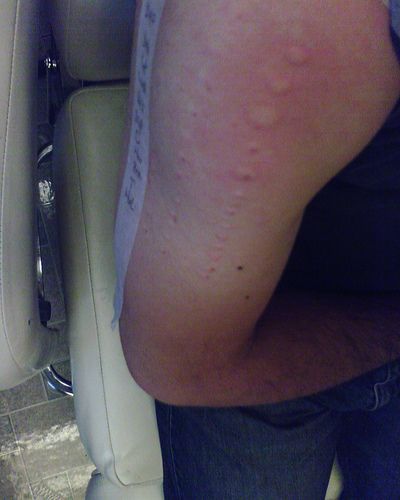Dust Mite Allergy

House dust mite allergy is very common and is associated with asthma eczema and perennial allergic rhinitis Ventilation is important.
Dust mite allergy. A dust allergy or dust mite allergy is an allergic reaction to tiny bugs that live in the dust in your house. House dust mites are barely visible to the naked eye. The two main allergenic house dust mites are Dermatophagoides pteronyssinus the European Dust Mite Dermatophagoides farinae the American Dust Mite.
Dermatophagoides farinae American house dust mite Dermatophagoides microceras. A doctor may find it hard to. But for people with a predisposition to allergies they can become a problem.
The itching can be on the skin which is in case of skin rashes and hives or even on your eyes roof of your mouth or your nose. The most common side effects of these skin tests are itching and redness. Dust mites are microscopic eight-legged creatures that resemble tiny white spiders.
If your dust mite allergy triggers your asthma you may also experience. Common dust mite allergy symptoms include. Symptoms include asthma atopic eczema and allergic rhinitis.
If you are allergic to house dust mites it may help to reduce their population and remove their dead bodies and faeces from your home as much as possible. Dust mite allergy is an allergic reaction to tiny bugs that commonly live in house dust. Dust Mite Allergy Symptoms and Signs The most common symptoms of dust mite allergy are similar to the symptoms brought about by different allergens.
Once a persons body reacts to the allergens inside his body he may develop hay fever. Many people with dust mite allergy also experience signs of asthma such as wheezing and difficulty breathing. Pteronyssinus is the most common type of dust mite found in Australia and is known to cause allergic symptoms.












